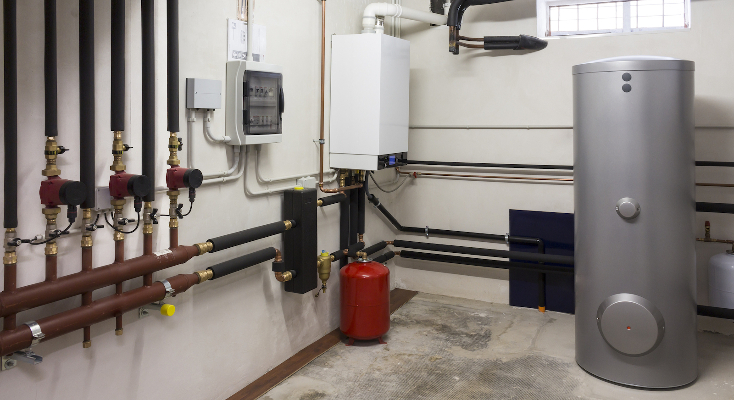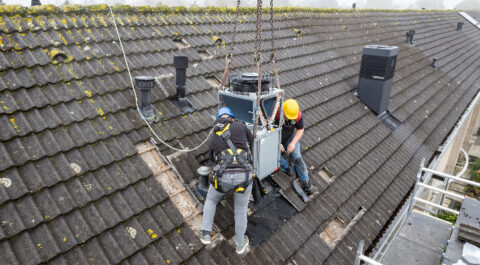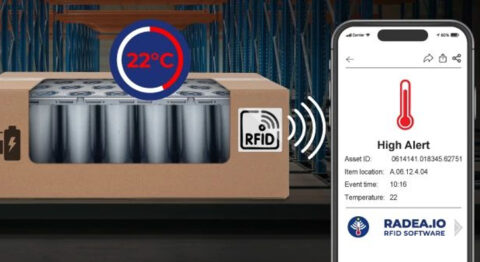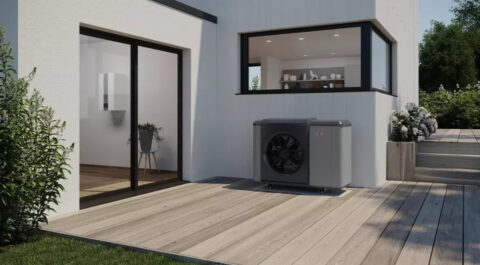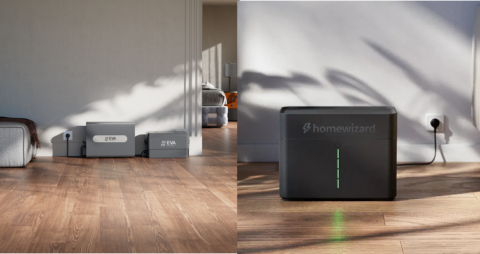If your customer has or wants a heat pump, the challenge is to get the highest possible efficiency from it and to ensure that the lifespan is not unnecessarily and unintentionally shortened. Both are strongly related to the use of the heat pump and a buffer tank can help your customer with this.
If a heat pump produces more heat than the heat demand at a given moment, it is of course a huge waste to let that heat go to waste. This also reduces the efficiency of the heat pump, because your customer is then not using it optimally. It is better to temporarily store this excess heat somewhere. To buffer it. So that it can still be used at a later time. This can be done by expanding the heat pump system with a buffer tank.
Maximum efficiency
In a buffer tank, heat that is not immediately needed can be temporarily stored. This is done by heating the liquid in this vessel. This heat can then be stored for days, thanks to the good insulation of the buffer tank. You can compare it well to a battery or accumulator. Only this time your customer is not storing electricity in it, but pure heat. A buffer tank is therefore also called a thermal battery. The efficiency and thus the COP and SCOP of your installations increase because you get the most out of the heat pump.
No water heater
The important thing to know and explain to your customers is that this is purely heat intended for the heating system, which means that the heat pump does not have to come into action every time. So it is not about tap water, but about heating water. For tap water, you need a (hot water) boiler. Although there are also buffer tanks that can be used to heat both heating water and tap water. In that case, buffer heat is transferred to the tap water via a heat exchanger.
Saving energy costs
A buffer tank is not just for heat from the heat pump. Suppose a customer has solar panels on the roof. Then the buffer tank can be heated with free electricity during the day to bring the house up to temperature during the day and in the evening. If there is not enough solar power on a cloudy day or if there are no solar panels at all, the buffer tank can be charged at night via a more advantageous off-peak tariff and still save some money.
Extend lifespan
An added benefit is that a buffer tank can significantly extend the life of a heat pump. If a heat pump is constantly turning on and off to keep the house at the desired temperature, it is quite detrimental to its lifespan. This constant turning on and off is called commuting. Ideally, you'd like a heat pump to run continuously for as long as possible, rather than running in fits and starts.
This may work fine if a cold house is brought up to temperature in one go, but not to smooth out temperature fluctuations that occur afterwards. It also goes wrong if, for example, only one room needs to be heated or reheated. Because then only a fraction of the heat pump's capacity is needed and the device goes on and off as if it were a flashing light.
No more commuting
Well, the buffer tank solves this in one go. Because first the buffer tank is used for (additional) heating and only when it is really necessary does the heat pump come into action and that will be for a longer period of time. This is an important advantage to emphasize to customers, because buffer tanks are certainly not cheap and also take up a lot of space. The longer life of the heat pump, higher efficiency and additional energy savings then suddenly make such a buffer tank a lot more attractive.
Multiple heat sources
How much capacity should a buffer tank have? A good rule of thumb is ten to twenty liters per kW of heat pump capacity. If it is a modulating heat pump, the lowest capacity can be used. A buffer tank often has several connections.
In addition to a heat pump, the customer can then connect PVT panels or other heat sources, so that even that (free) heat can be stored for later. There may be one or more heat exchangers in a buffer tank. This keeps something like a PVT system (piping with refrigerant) neatly separated from the fluid in the buffer tank.
Thermally layered
A buffer tank can be thermally stratified. By working with different temperature layers, fluid from a different temperature layer can be used for each application. Such as a higher temperature for radiators or tap water and a lower temperature for underfloor heating.
By the way, a buffer tank can also store cold instead of heat, which can be used to efficiently keep a home cool for long periods of time. Of course either one or the other, not both at the same time.
